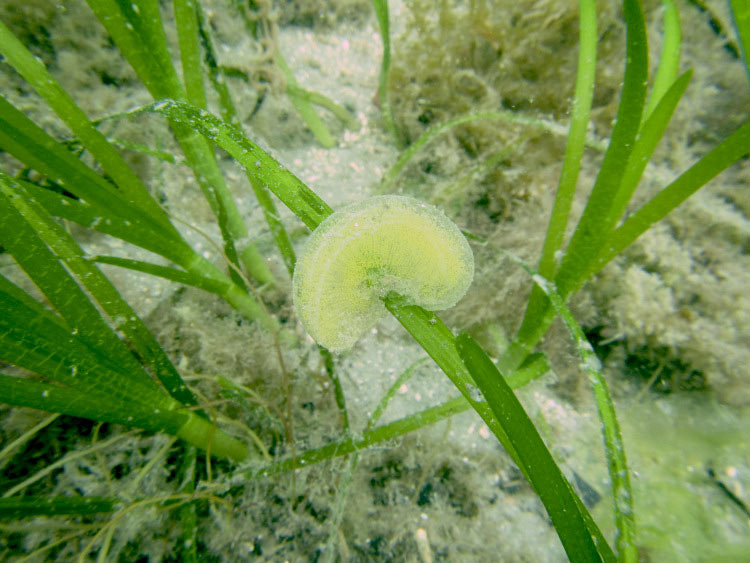
Seagrass meadows provide a suitable environment for eggstraordinary creatures to lay and secure their weird and wonderful eggs. As its Easter, we thought it would be a nice opportunity to introduce you to eggs that can be found in seagrass meadows around our coast.
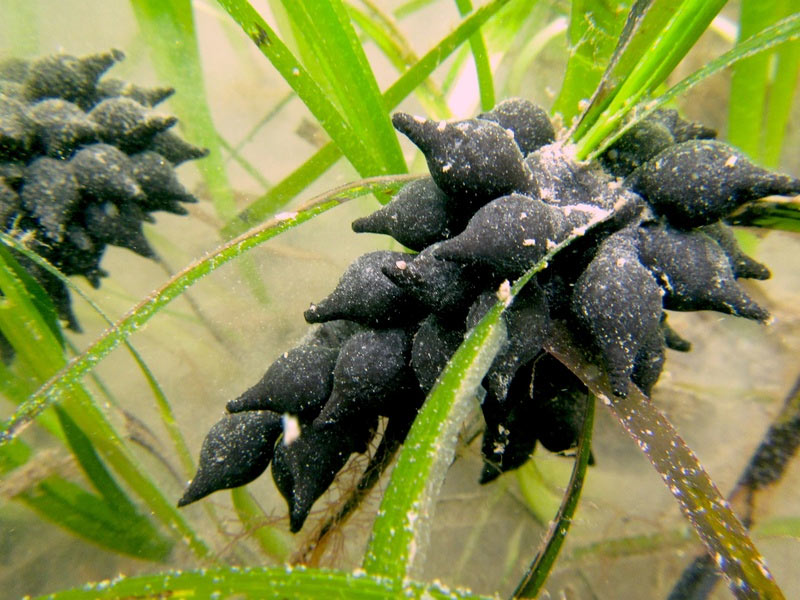
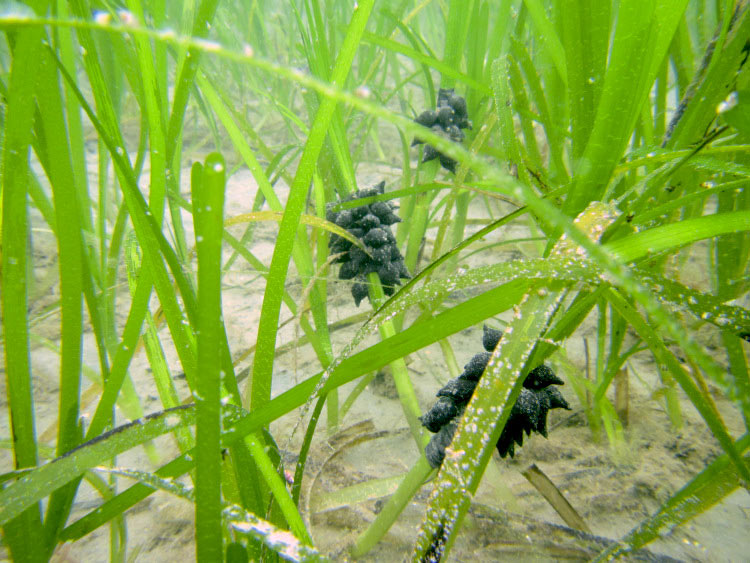
Cuttlefish eggs or “sea grapes” attached to blades of Zostera marina (Photo: Michiel Vos | www.anbollenessor.wordpress.com)
The charismatic cuttlefish, Sepia officinalis, is a common visitor to seagrass meadows around the British Isles. Each spring, cuttlefish migrate inshore to shallow bays and estuaries to mate, where the females their eggs. The small black eggs are usually set in bunches, and because of their appearance, are generally called “sea grapes”. These eggs are all of a similar size, about 15 to 25 mm long and can be found beyond the low spring tide mark attached to seagrass blades. Once hatched, these eggstra special creatures are the size of a finger nail and can regularly be seen hiding amongst seagrass leaves during summer months.
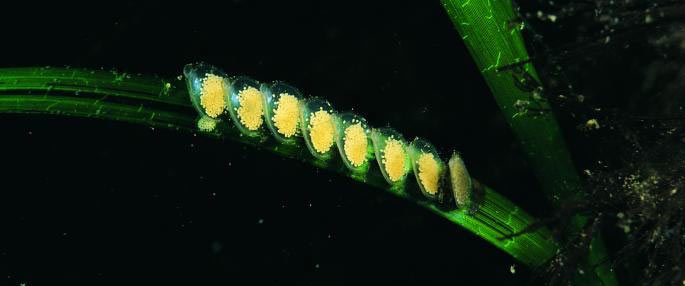
Netted dog whelk egg sacks on Zostera marina (Photo: Paul Kay)
Another special type of egg found in seagrass is that of the netted dog whelk, Nassarius reticulates. These miniature egg capsules are generally vase-shaped and usually attached in rows on seagrasses leaves. The transparent capsules have up to 300 eggs each and after a month they hatch into larvae that live in the plankton for two months.
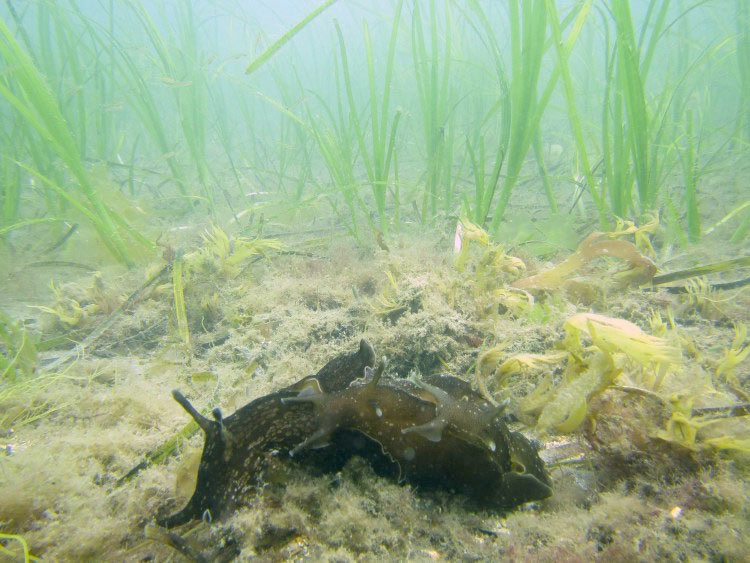
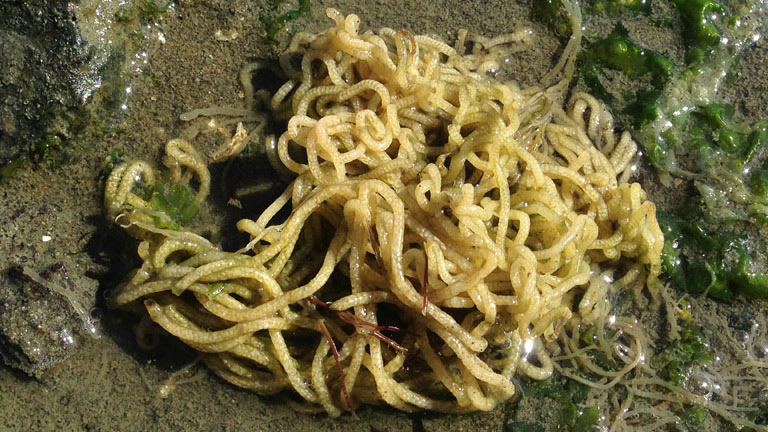
Three sea hares (Aplysia punctata) whithin a Zostera marina meadow, above (Photo: Michiel Vos | www.anbollenessor.wordpress.com) and sea hare egg srings, below.
Not quite the Easter bunny, but the sea hare, Aplysia punctata, is also a common sight amongs seagrass leaves. This large mollusc is typically found on the sea-bed grazing on algae, often amongst seagrass where they leave their yellowish pink egg strings during the autumn-spring breeding season. Large egg masses from shelled Ophistobranch can also be spotted on leaves.
Why not try a different kind of egg hunt this Easter. Happy hunting.
